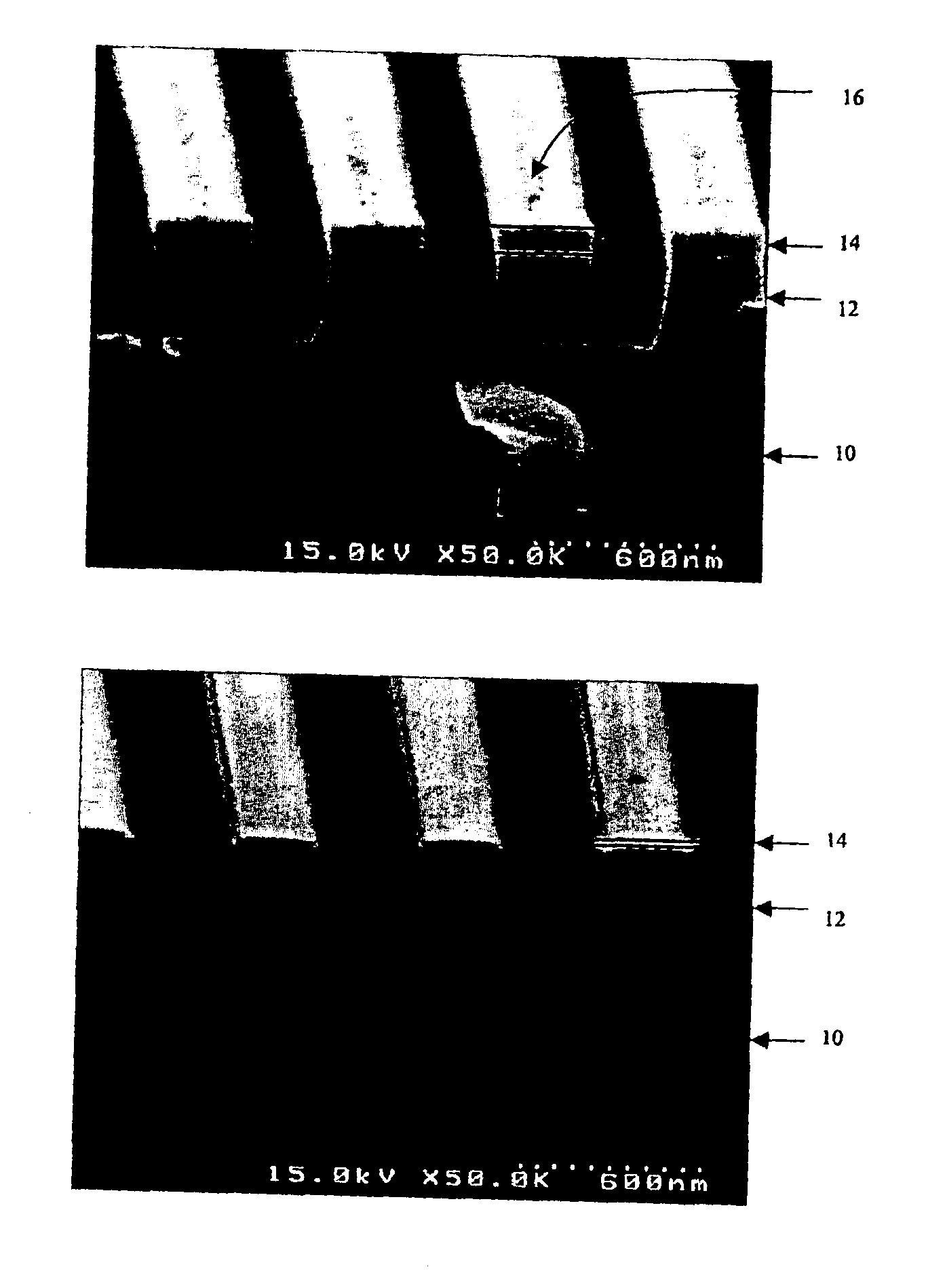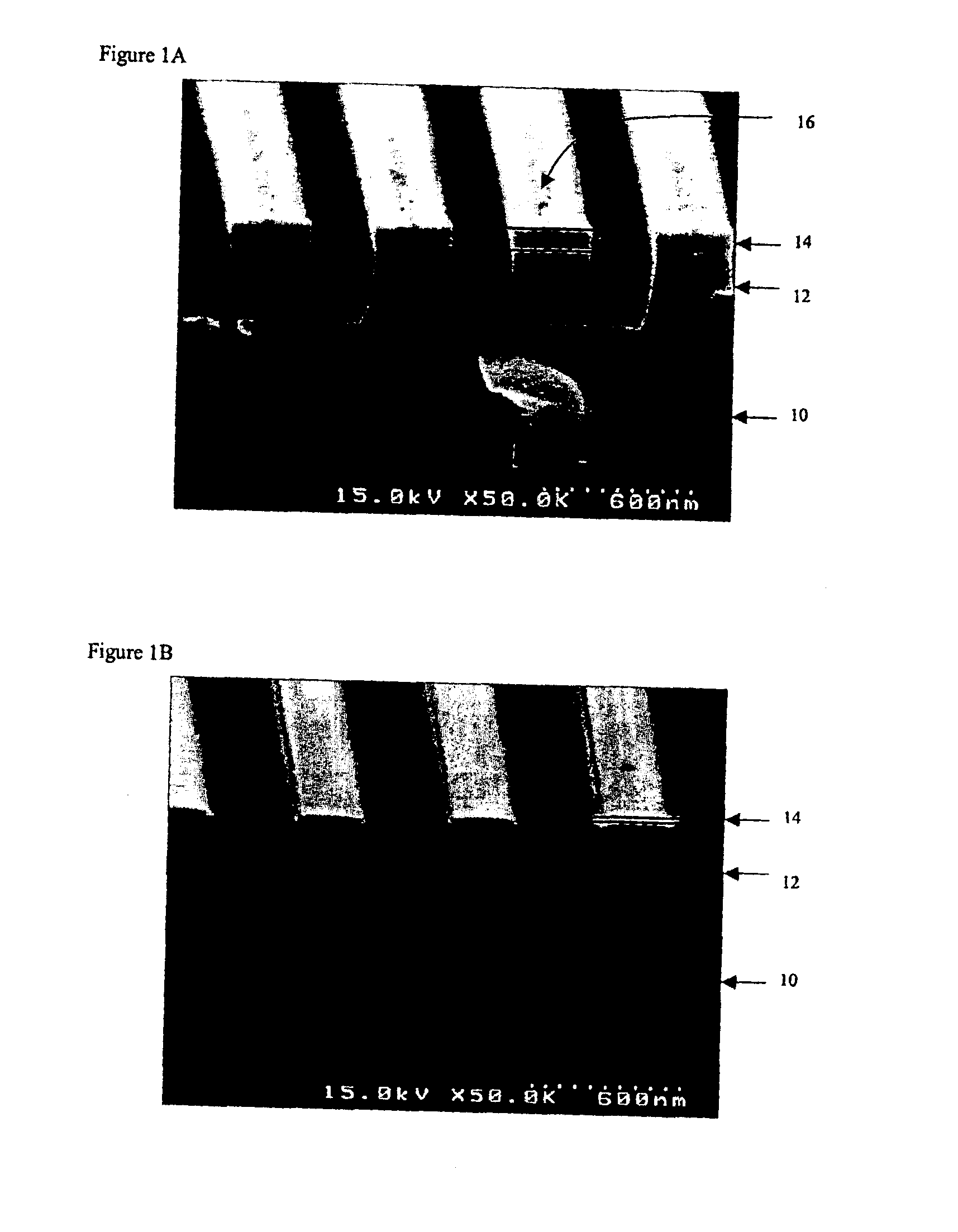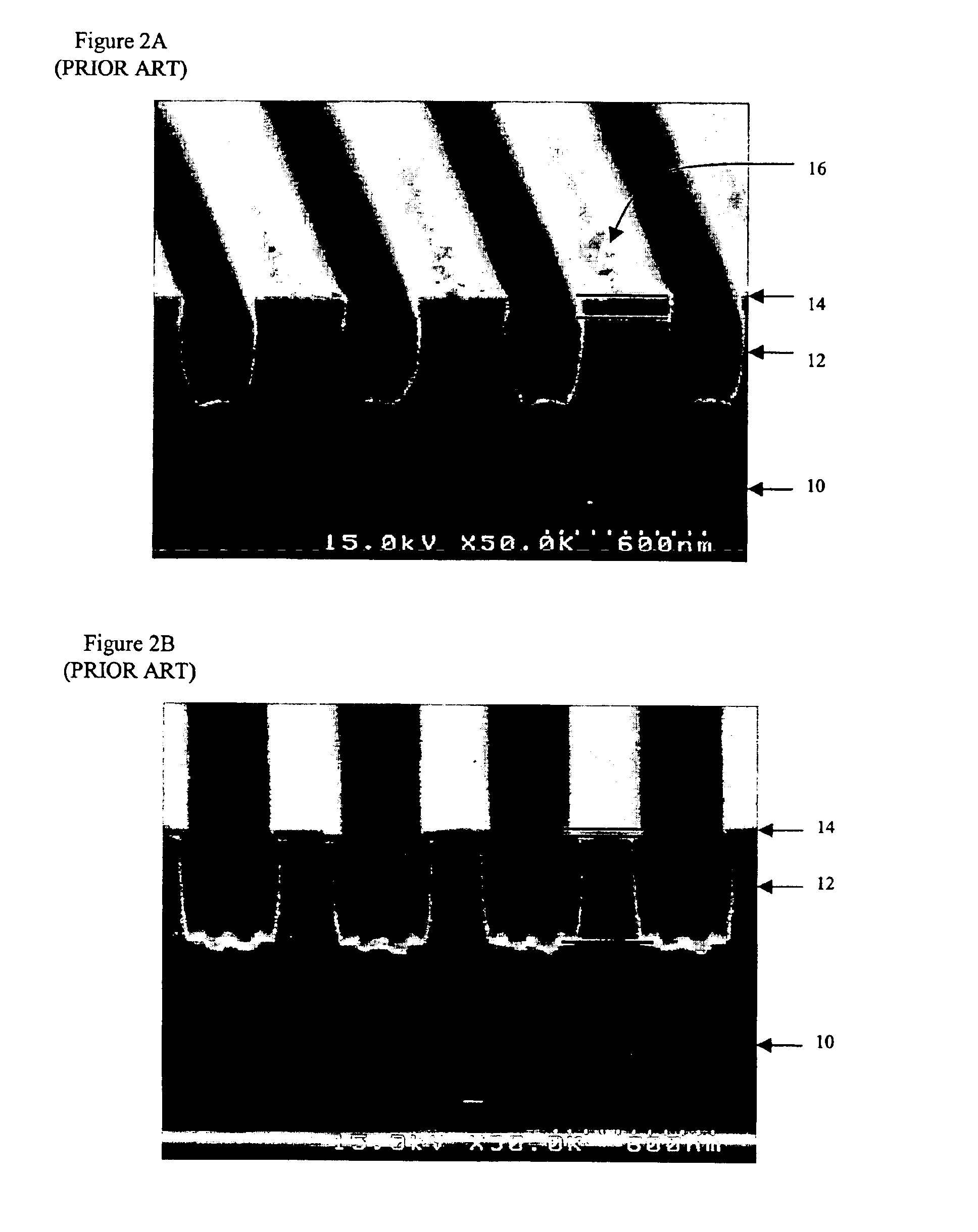Plasma ashing process
a technology of ashing process and plasma, which is applied in the field of plasma ashing process, can solve the problems of adversely affecting device performance, yield and reliability of the final integrated circuit, and oxygen-containing plasmas readily damage certain materials used in advanced integrated circuit manufacturing, and achieve the effect of increasing the ashing ra
- Summary
- Abstract
- Description
- Claims
- Application Information
AI Technical Summary
Benefits of technology
Problems solved by technology
Method used
Image
Examples
example 1
[0045]As illustrated by this example, a significant advantage of the oxygen-free and nitrogen-free plasma process is the improvement in removal efficiency of photoresist, organic overlayers, and polymers / residues from substrates including carbon containing low k dielectrics without affecting the underlying dielectric layers. This is a significant commercial advantage as device manufacturers transition to the use of low k dielectric layers in the fabrication of advanced integrated circuits.
[0046]Referring now to FIGS. 1A and 1B, trench patterns were etched into multiple silicon substrates 10 by an etcher using standard etching processes. The substrates 10 included a low k dielectric layer 12 and a silicon dioxide layer 14. The patterns were selectively etched by use of a patterned I-line photoresist mask. The low k dielectric layer 12 was a carbon-doped oxide commercially available under the trade name CORAL. The substrates were then ashed using a Fusion Gemini ES3 Plasma Asher avail...
example 2
[0049]In this example, the substrates were prepared in accordance with Example 1 and exposed to a conventional ashing plasma process. The plasma gas mixture included nitrogen gas in place of the helium gas and at the same volume percentage. All other conditions were identical to that in Example 1. The process conditions are shown in Table II.
[0050]
TABLE IINitrogen-containing PlasmaTimePressurePower5% H2 / N2CF4 Step(min.)(torr)(W)Temp (° C.)(sccm)(sccm)1251.5Off3705000502201.51500370500050
[0051]As shown in FIG. 2A, scanning electron microscopy of substrates ashed with the nitrogen-containing plasma yielded results similar to the nitrogen-free plasma process of Example 1. A comparison of FIGS. 1A and 2A show similar etch profiles. However, as shown in FIG. 2B, exposing the ashed wafers to the same wet clean process used in Example 1 resulted in significant CD loss of the low k dielectric layer 12. The wet clean process clearly removed significant amounts of the low k dielectric materia...
example 3
[0052]In this example, the rate of photoresist removal was monitored as a function of the percentage of hydrogen gas in the plasma. Substrates were coated with a thick layer of photoresist and exposed to one of four different plasmas (A-D) in a Fusion Gemini ES3 plasma asher. The process conditions and flow rates were held constant for each wafer set. The photoresist thickness was conventionally measured by ellipsometry before and after processing in order to determine the removal rate. As shown in Table III, the substrates were exposed to: A. a nitrogen-free plasma, B. a nitrogen-free plasma with tetrafluoromethane (CF4), C. a nitrogen-containing plasma and D. a nitrogen-containing plasma with CF4. The percentage of hydrogen in the plasma gas mixture was varied as a percentage of the total volume of the hydrogen gas mixture. The results are graphically shown in FIG. 3.
[0053]
TABLE IIIPlasma Gas CompositionsHydrogen / Nitrogen(FORMING GAS)Hydrogen / HeliumCF4PLASMAflow rate (sccm)flow ra...
PUM
| Property | Measurement | Unit |
|---|---|---|
| dielectric constant | aaaaa | aaaaa |
| temperature | aaaaa | aaaaa |
| temperature | aaaaa | aaaaa |
Abstract
Description
Claims
Application Information
 Login to View More
Login to View More - R&D
- Intellectual Property
- Life Sciences
- Materials
- Tech Scout
- Unparalleled Data Quality
- Higher Quality Content
- 60% Fewer Hallucinations
Browse by: Latest US Patents, China's latest patents, Technical Efficacy Thesaurus, Application Domain, Technology Topic, Popular Technical Reports.
© 2025 PatSnap. All rights reserved.Legal|Privacy policy|Modern Slavery Act Transparency Statement|Sitemap|About US| Contact US: help@patsnap.com



